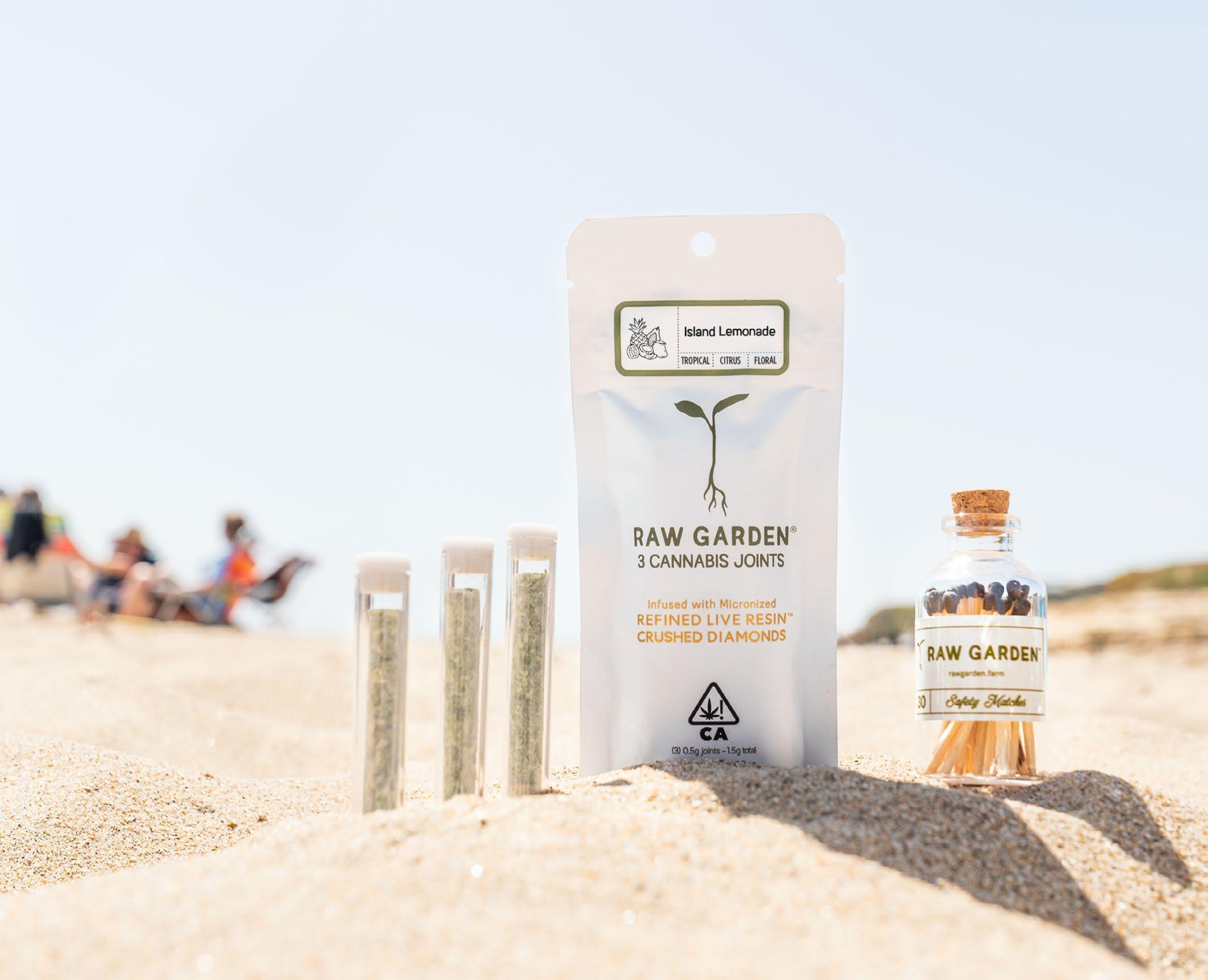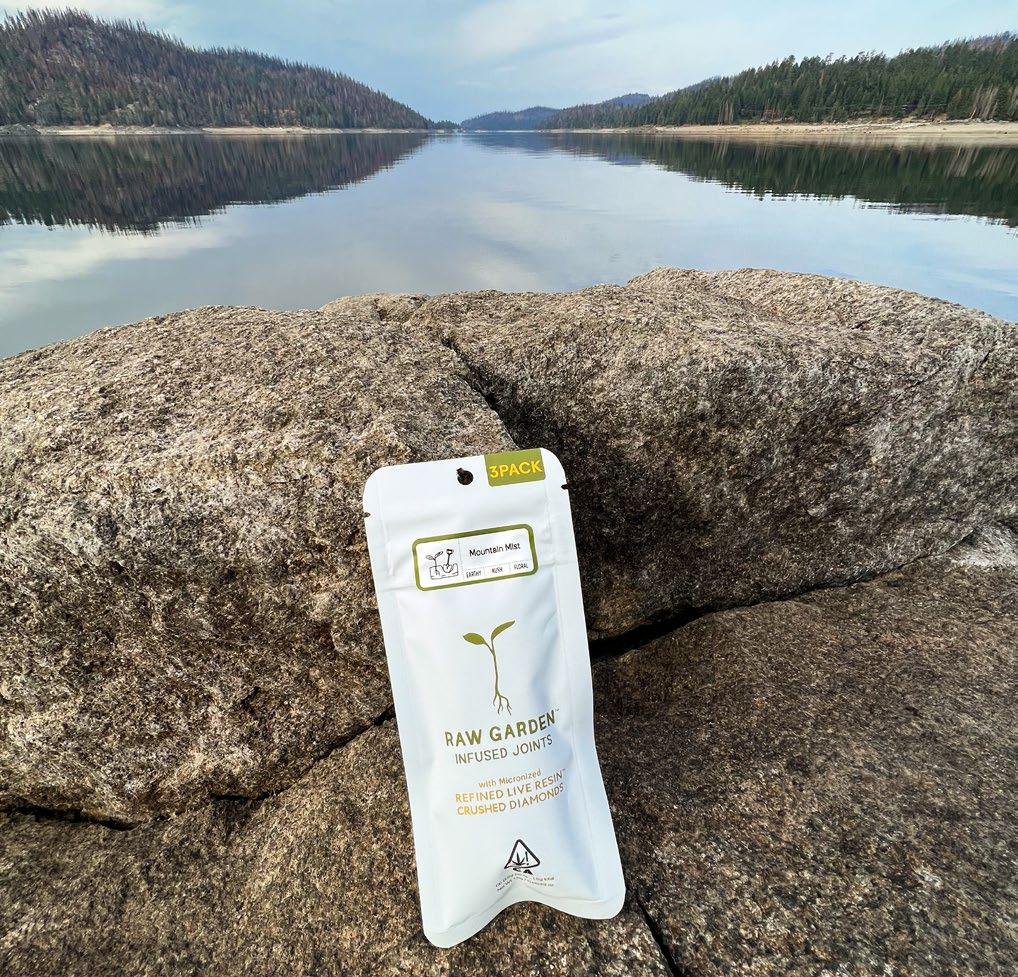
2 minute read
The Birth, Growth and Perseverance of Raw Garden
When asked about the launch of Raw Garden, Martin said that everything surrounding the business exists because of serendipitous relationships and timing, great team members, a meticulous approach to farming, quality goals, consumer trust and respect and some good fortune.
Today, Raw Garden is known for its wide array of concentrate options: live sauce, live resin, cartridges, infused joints, live resin diamonds — the list goes on.
Raw Garden began to explore this element of the industry as a bit of an aside, at least initially. At the outset, and to this day, Martin’s brother-in-law Khalid Al-Naser managed sales. Al-Naser already had a longstanding fascination with hashish after spending a month in India during his late teens, and he always ensured some portion of each crop was concentrated.
“This was beneficial because we learned a lot about the post harvest handling of the plant and extraction, starting with ice-and-water and eventually the use of solvents,” Martin said.
Around this time, about 2013, Martin recalled that the Central Valley areas of Fresno and Madera Counties were in the midst of a steady, year-long political push that banned all medicinal cannabis cultivation via civil fines and potential property forfeiture.
Martin and the team had just finished building a small extraction laboratory, which became dependent on a one-acre greenhouse. Due to Fresno County’s new ordinance, the greenhouse decided to shutter. With enough of Raw Garden’s concentrate production dependent on this farm, Martin set out on a mission to find another municipality that would allow them to return to acreage sales.
“Luckily, I stumbled across Santa Barbara County via an introduction to Tutti Frutti Farms and Santa Barbara County native, Chris Cadwell,” Martin said. “Chris loved the region for cannabis production and he, along with another farmer from the Santa Maria Valley, believed in the story of relocating the Fresno/Madera growing and extraction business.”
The operation eventually shifted to some of Cadwell’s and other farmers’ Santa Barbara properties. The move also pushed Raw Garden to begin growing outdoors, in the “infamous and transverse mountain regions” of the county.
The climate, Martin said, matches the needs of vintners. The first season, they planted a number of varieties that they had otherwise only cultivated indoors. He said the richness of the crop immediately stood out, and he and his team were immediately “addicted” to the opportunity the Santa Ynez Valley could provide. They were also well aware of the region’s solid agricultural resources that were ready to support Raw Garden’s scale.
Though, Martin cautioned that the fight wasn’t over: “One big question still remained: What would the politicians have to say?”
Martin said that county leaders already liked the Raw Garden story and believed cannabis was an important crop for the future. Following its first harvest in 2015, the Raw Garden team was not standing in front of the Montecito Planning Commission, essentially requesting the commission not copy municipalities like Fresno as Santa Barbara County staff that were rushed to get ahead of new state laws that would regulate cannabis. At the time, Raw Garden existed as a small boutique and indoor concentrate brand at a few Bay Area stores, though Martin and the team still saw the opportunity to scale in this new region that allowed for an abundant amount of high-quality, freshly frozen flowers, a “dab farmer’s dream,” he said.
This was also a time that live resin was not accessibly priced, Martin explained. High-quality concentrates made from fresh-frozen flower retailed for $80-100 a gram, and the Raw Garden team members knew they could make this treasured substance more accessible if given the chance.
“Normalizing live resin became our mantra,” Martin said.










